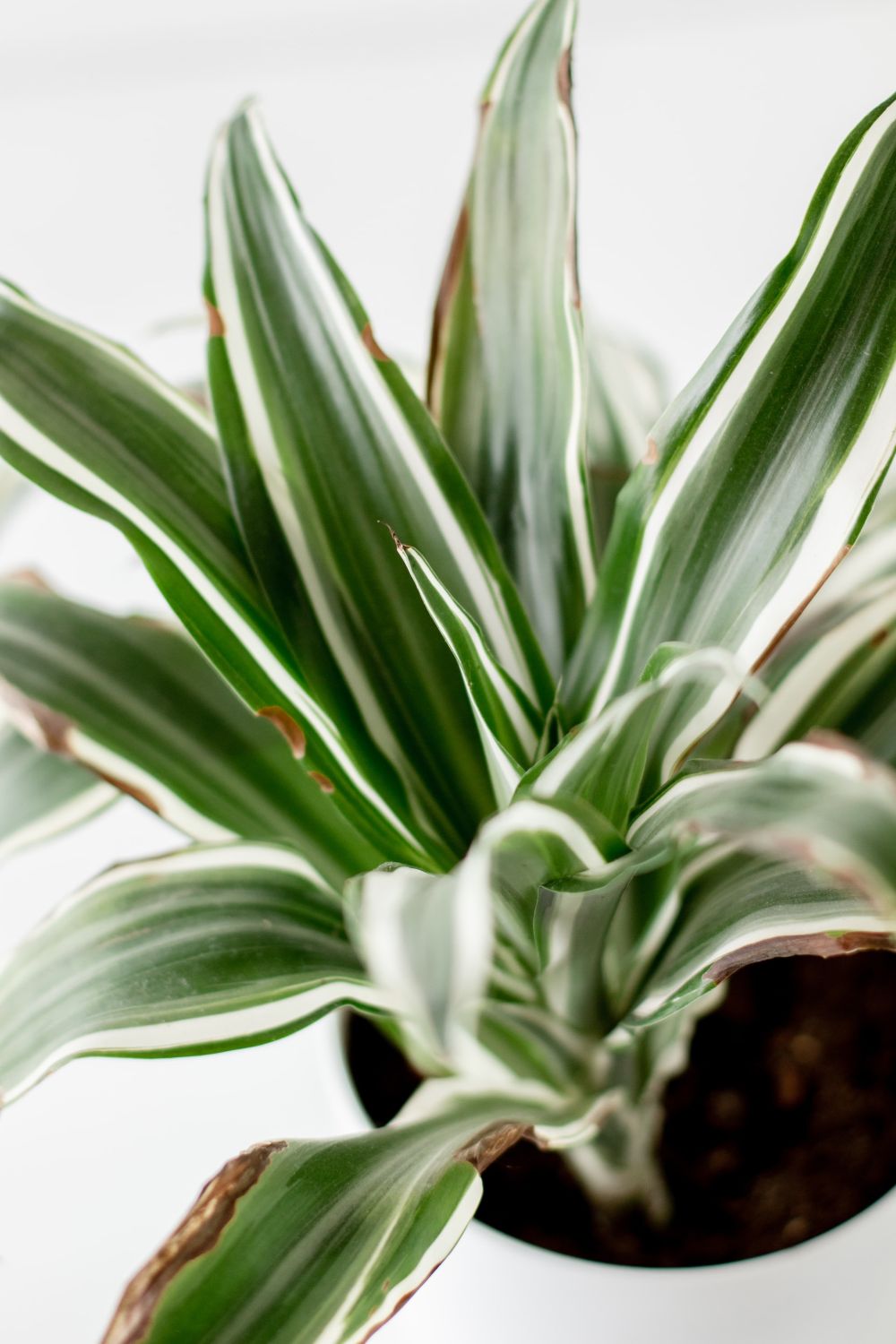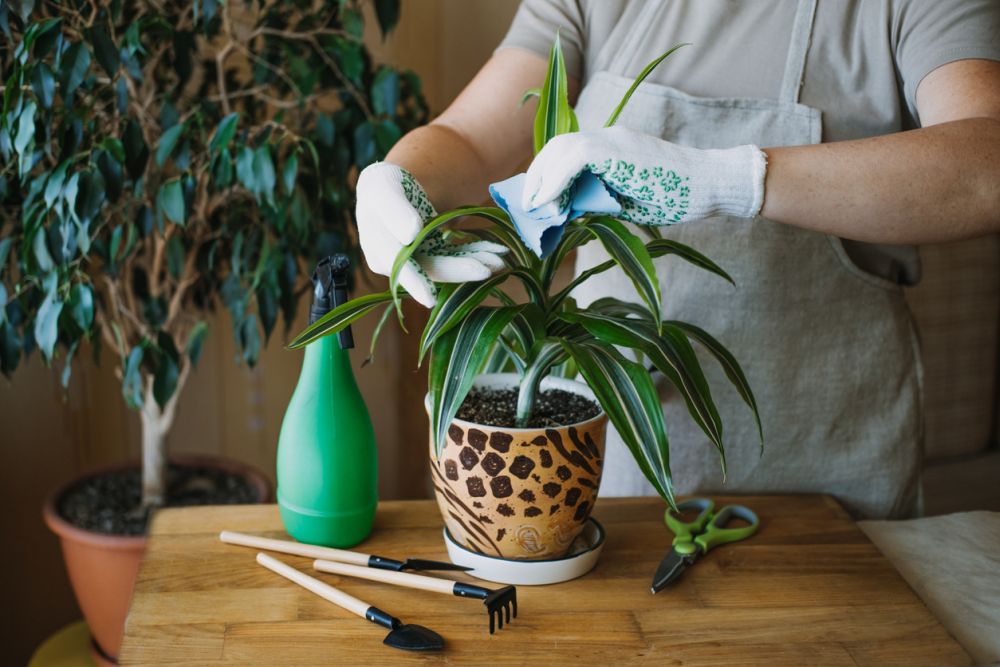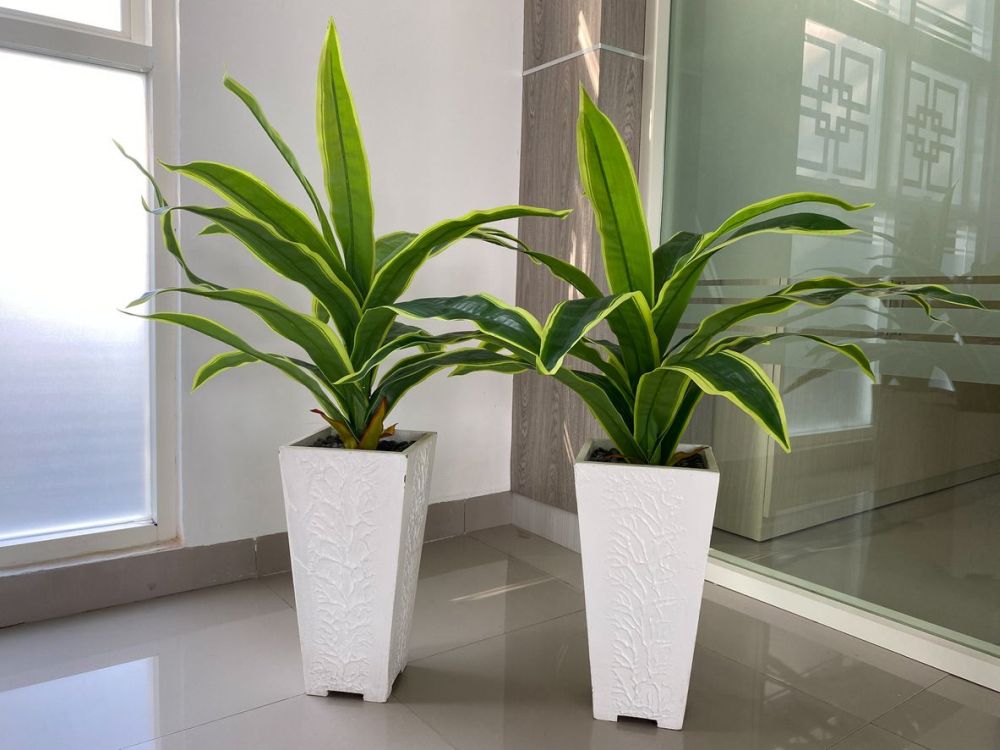How to Repot a Corn Plant to Keep Your Dracaena Fragrans Healthy and Happy
Knowing how to repot a corn plant (Dracaena fragrans) will come in handy when it outgrows its current container. Keep reading to discover the correct way to transfer a corn plant to a new pot.
Repotting a corn plant isn’t difficult at all. But there are a few rules to follow and ensure that you don’t accidentally damage or kill the plant while trying to move it. This article explains the necessary supplies and step-by-step instructions for moving a corn plant to a new container. You will also learn the signs that your corn plant needs repotting, tips for managing corn plant transplant shock after repotting, and more helpful information.
When should I repot my corn plant?
Generally, it’s best to repot the corn plant every 2-3 years. Here are typical signs that your Dracaena fragrans needs repotting:
- Reduced growth rate: The corn plant’s aerial parts only grow while the root system is capable of sustaining it. If the plant has stopped growing, the roots likely don’t have enough space to continue developing, so you must move the Dracaena fragrans to a bigger container.
- Overgrown roots: Roots poking out through the top of the soil or the pot’s drainage holes indicate that your corn plant needs more growing space. In extreme cases, the overgrown roots have deformed or cracked pots.
- Water drains too fast: Soil that absorbs water too quickly or a corn plant that needs watering more frequently indicates overdeveloped roots. So you must transfer your corn plant to a bigger pot.
- Water doesn’t drain: Water not seeping into the soil shows that the root system is overdeveloped and doesn’t have enough space to grow. So you must repot your Dracaena fragrans to a bigger container.
- Yellow or brown leaves: Leaves turning yellow or brown are a side-effect of a root-bound plant because there are no more nutrients in the soil. Since the roots have no more room to grow, you must repot the corn plant.
Supplies for repotting a corn plant
- A new pot slightly larger than the current one. It should have at least one drainage hole since Dracaena fragrans doesn’t like waterlogged soil. Otherwise, you will have to use porous material. Using an oversized pot will likely stress or suffocate the plant. When reusing an old pot, clean it properly to prevent disease spread.
- Porous material (optional) if the pot doesn’t have a drainage hole. Examples include small pebbles, charcoal, and terracotta pieces.
- Potting mix. Corn plants prefer light loamy soils that provide good drainage, such as cactus mixes.
- A container and water to prepare the potting mix.
- A trowel to help remove the corn plant from its current pot.
- A tarp or newspaper to lay over your working area and protect it from dirt.
- Gardening gloves to protect your hands.
- Shears to cut damaged roots.
How do I repot a corn plant?
Follow the instructions below to repot your corn plant successfully:
- Prior preparations: Water the corn plant the night before repotting it to make removing it from its old pot easier. Mix potting soil with water in a separate bowl, adding enough water to moisten the soil.
- Prepare the new container: Fill the new pot with about a third of the soil mix. If the pot doesn’t have a drainage hole, line the bottom with a layer of porous material before adding the soil.
- Remove the corn plant from its pot: Tip the pot to its side, grab the stem by its base, and gently tug on it so the corn plant comes off. Root-bound corn plants show resistance, so tap the pot’s bottom a few times while tugging on the stem simultaneously.
- Clean the root ball: Carefully remove any soil clumps stuck to the roots using your fingers without accidentally ripping the finer roots. Root-bound corn plants have roots wrapped around in a tight circle. Gently loosen up and spread the roots out as much as possible. This will help the corn plant better absorb water and nutrients from its new home. Next, use shears to cut away sick, damaged, or rotten roots.
- Place the corn plant in the new pot: Insert the corn plant in the new container; the root ball should sit about 2 in (5 cm) below the pot’s rim. While holding the plant vertically, slowly add the rest of the potting soil to fill the pot until the root ball is no longer visible. Tamp the soil with your hands without compacting it too much.
Tips for managing corn plant transplant shock
After repotting, the corn plant experiences transplant shock for a couple of weeks, during which it may show wilting signs like yellowing or falling leaves. Transplant shock is completely normal for all newly repotted plants. Here are some tips and tricks to manage corn plant transplant shock easier:
- Water: Thoroughly water the corn plant right after transferring it to a new pot. Subsequently, water the Dracaena fragrans only when the first 1-2 in (2.5-5 cm) of topsoil is dry.
- Light: Keep the corn plant in a well-lit area, such as a light shade, indirect sunlight, or filtered sunlight. Dracaena fragrans is extremely sensitive to full light until it fully recovers from transplant shock.
- Temperature and humidity: The corn plant prefers 60-75° F temperature (16-24° C) and 40-50% humidity.
- Fertilization (optional): Only fertilize your Dracaena fragrans if you used to do this before repotting it. In this case, pick a liquid fertilizer with a balanced NPK ratio. The corn plant doesn’t need a boost since store-bought potting mix already has all the necessary nutrients.
Check out the corn plant caring conditions for more info.
FAQs
Discover more helpful information about reporting corn plants.
Do corn plants need big pots?
Yes, corn plants need bigger pots when their root systems no longer have space to develop. However, if you don’t want your Dracaena fragrans to continue growing, keep its current pot and cut away some of the healthy roots and the equal amount of leaves.
Do corn plants like to be root bound?
Yes, corn plants prefer to be slightly root bound. However, you must eventually transfer it to a larger pot if you want your Dracaena fragrans to grow.
Why are the leaves of my corn plant turning yellow?
Yellow-turning leaves in corn plants may indicate a lack of nutrients in the soil, underwatering, or salt buildup due to fertilization or watering with hard water.
Should I cut the brown tips off Dracaena?
Yes, you should cut the brown tips off your Dracaena fragrans. These brown tips are harmful, and they will eventually spread through the entire leaf if left untreated. Brown tips are usually due to salt build-up caused by fertilization or watering with hard water. Avoid brown tips by watering your corn plant with distilled water and fertilizing it less.
Closing thoughts
Properly repotting a corn plant isn’t difficult. It’s not that different from repotting any other plant. But it requires patience and attention since even the slightest mistake may cause irreparable damage. As long as you carefully follow the steps outlined in this article, your Dracaena fragrans should be fine.


